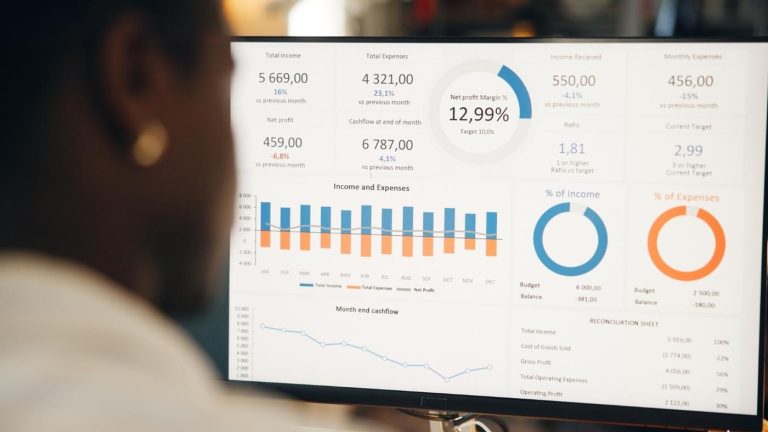Understanding Consumer Behavior: How Data Can Help Retailers Make Better Decisions
In today’s fast-paced retail environment, understanding consumer behavior is more important than ever. Retailers who can tap into the needs, preferences, and patterns of their customers are the ones most likely to succeed. But how exactly can you gain a deeper understanding of your customers, and how can this data help you make smarter decisions?
Let’s dive into how leveraging consumer data can improve everything from product selection to in-store experiences.
1. What is Consumer Behavior Data?

Consumer behavior data refers to the insights gathered from customers’ purchasing patterns, preferences, interactions with products, and even how they engage with your store layout. This data can be collected from a variety of sources, including:
- Point-of-sale (POS) systems
- Loyalty programs
- Website and app analytics
- Social media interactions
- In-store sensors (like foot traffic heatmaps)
By collecting and analyzing this data, retailers can get a comprehensive view of their customers, which can guide decisions and enhance the shopping experience.
2. Why Understanding Consumer Behavior is Crucial for Retailers
Retail is highly competitive, and understanding what drives customers can give you a distinct edge. When you understand your customer, you can:
- Improve product selection: Stocking items that align with consumer demand ensures that you’re not overstocking or understocking specific products.
- Optimize store layout: Knowing how customers move through your store can help you design a layout that encourages more browsing and increases sales.
- Tailor marketing efforts: Data-driven insights can allow you to send personalized marketing messages that resonate with your audience.
- Enhance customer loyalty: When customers feel understood, they’re more likely to return.
3. Types of Consumer Data to Leverage

Not all consumer data is created equal. Here are some key types of data retailers should focus on:
- Demographic Data: Age, gender, location, and other demographics can help you create targeted offers and promotions.
- Behavioral Data: This includes past purchases, browsing patterns, and interactions with your store—both online and offline.
- Psychographic Data: This is about understanding the “why” behind consumer behavior—values, interests, and lifestyle choices that drive purchasing decisions.
- Feedback and Reviews: Listening to what customers say in reviews or direct feedback can give you valuable insight into areas that need improvement.
4. How Data-Driven Decisions Can Improve Retail Performance

Once you have a good handle on consumer data, you can start making more informed decisions. Here are some practical ways to apply that data:
- Better Inventory Management: Data on purchasing patterns helps you identify which products are moving quickly and which are lagging. You can then make adjustments to stock up on in-demand products and avoid wasting resources on items that aren’t selling.
- Personalized Shopping Experiences: Customers increasingly expect personalization. Whether it’s tailoring product recommendations based on past purchases or offering personalized discounts, these small touches can make a big difference.
- Predicting Future Trends: Analyzing historical data can help you spot emerging trends before they take off. Retailers who get ahead of the curve on consumer trends are better positioned to capitalize on new opportunities.
- Optimizing Marketing Campaigns: Consumer data allows you to create marketing campaigns that speak directly to the interests of your audience. Instead of a one-size-fits-all approach, you can use insights to create hyper-targeted campaigns that convert better.
5. How to Collect and Use Consumer Data Ethically
As you gather consumer data, it’s essential to do so ethically. Customers want to know that their data is being used responsibly. Be transparent about the types of data you collect and how you intend to use it. Prioritize data security and ensure you comply with all relevant privacy laws.
Conclusion
In today’s retail landscape, data is a powerful tool that can transform the way you understand and engage with your customers. By leveraging consumer behavior insights, retailers can make better-informed decisions that lead to improved customer experiences, increased sales, and long-term business success.
However, remember that collecting and using consumer data should always be done ethically and transparently. When used responsibly, data can unlock incredible opportunities for retailers to stay ahead of the competition and truly understand their customers on a deeper level.
